Utilize this comprehensive nursing care plan and management guide to provide effective care for patients with asthma. Gain valuable insights on nursing assessment, interventions, goals, and nursing diagnosis specifically tailored for asthma in this guide.
What is Asthma?
Asthma is a chronic inflammatory disease of the airways characterized by hyperresponsiveness, mucosal edema, and mucus production. This inflammation ultimately leads to recurrent episodes of symptoms of cough, chest tightness, wheezing, and dyspnea. Asthma is a common chronic disease affecting approximately 26 million persons in the United States. It is the most common chronic disease in childhood (Morris & Mosenifar, 2022).
Risk factors for asthma include family history, allergy, and chronic exposure to airway irritants or allergens such as grass, weed pollens, mold, dust, or animals. Asthma can be triggered commonly and exacerbated through airway irritants, exercise, stress or emotional upset, rhinosinusitis with postnasal drip, medications, viral respiratory infections, and gastroesophageal reflux.
The pathological process of asthma begins with the inhalation of an irritant or an allergen, which then, due to bronchial hypersensitivity, leads to airway inflammation and an increase in mucus production. This leads to a significant increase in airway resistance, which is most pronounced upon expiration. If not corrected rapidly, asthma may become more difficult to treat, as the mucus production prevents the inhaled medication from reaching the mucosa (Hashmi et al., 2022).
Nursing Care Plans and Management
Nursing care for patients with asthma varies depending on symptom severity, ranging from outpatient treatment for mild symptoms to hospitalization for acute and severe cases. Patients and their families may experience fear and anxiety due to dyspnea, emphasizing the need for a calm approach. Respiratory status is assessed by monitoring symptoms, breath sounds, peak flow, pulse oximetry, and vital signs. Nursing interventions include obtaining a medication allergy history, identifying current medications, administering prescribed medications, monitoring responses, providing fluids if necessary, and assisting with intubation and mechanical ventilation if acute respiratory failure occurs. Open communication with the patient and family is maintained throughout these procedures.
Nursing Problem Priorities
The following are the nursing priorities for patients with asthma:
- 1. Improving Breathing Pattern & Gas Exchange
- 2. Maintaining Patent Airways & Reducing Airway Inflammation
- 3. Medical Administration and Pharmacologic Support
- 3. Preventing Exacerbation of Asthma
- 4. Reducing Anxiety & Improving Coping
- 5. Promoting Rest & Energy Conservation
- 6. Providing Patient Education & Health Teachings
Nursing Assessment
Assess for the following subjective and objective data:
- Abnormal arterial blood gases (hypoxia, hypercapnia)
- Adventitious lung sounds (wheezes, rhonchi)
- Changes in respiratory rate and rhythm
- Changes in vital signs
- Chest tightness
- Confusion
- Cough
- Cyanosis
- Dyspnea (including orthopnea)
- Inability to mobilize secretions
- Loss of consciousness
- Nasal flaring
- Prolonged expiration
- Use of accessory muscles
Assess for factors related to the cause of asthma:
- Swelling and spasm of the bronchial tubes in response to inhaled irritants, infection, drugs, allergies, or infection
- Bronchial secretions
- Inability to mobilize and spontaneously expel secretions
- Bronchospasms
- Increased pulmonary secretions
- Ineffective cough
- Mucosal edema
- Obstruction of airways by secretions
- Bronchospasm
- Alveoli destruction
Nursing Diagnosis
Following a thorough assessment, a nursing diagnosis is formulated to specifically address the challenges associated with asthma based on the nurse’s clinical judgement and understanding of the patient’s unique health condition. While nursing diagnoses serve as a framework for organizing care, their usefulness may vary in different clinical situations. In real-life clinical settings, it is important to note that the use of specific nursing diagnostic labels may not be as prominent or commonly utilized as other components of the care plan. It is ultimately the nurse’s clinical expertise and judgment that shape the care plan to meet the unique needs of each patient, prioritizing their health concerns and priorities.
Nursing Goals
Goals and expected outcomes may include:
- The client will maintain an optimal breathing pattern, as evidenced by relaxed breathing, normal respiratory rate or pattern, and absence of dyspnea.
- The client will display normal arterial blood gas results.
- The client will be free of cyanosis and other signs and symptoms of hypoxia.
- The client will experience no signs of respiratory compromise or complications.
- The client will demonstrate improved ventilation and adequate oxygenation of tissues by normal ABGs.
- The client will be free of symptoms of respiratory distress.
- The client will participate in the treatment regimen within the level of ability and situation.
- The client will verbalize understanding of the cause and therapeutic management regimen.
- The client will maintain airway patency as evidenced by clear breath sounds, improved oxygen exchange, normal rate and depth of respiration, and ability to effectively cough out secretions.
- The client will demonstrate behaviors to improve airway clearance.
Nursing Interventions and Actions
Therapeutic interventions and nursing actions for patients with asthma may include:
- 1. Improving Breathing Pattern & Gas Exchange
- 2. Maintaining Patent Airways & Reducing Airway Inflammation
- 3. Medical Administration and Pharmacologic Support
- 3. Preventing Exacerbation of Asthma
- 4. Reducing Anxiety & Improving Coping
- 5. Promoting Rest & Energy Conservation
- 6. Providing Patient Education & Health Teachings
1. Improving Breathing Pattern & Gas Exchange
Bronchial secretions and mucosal edema are key factors that contribute to impaired breathing patterns in asthma. These factors cause narrowing of the airway lumen and obstruction, leading to reduced airflow and increased carbon dioxide levels in the blood. Hyperventilation, characterized by deeper, faster, and longer breaths, is the body’s attempt to eliminate excess carbon dioxide. In addition, asthma also impairs gas exchange at the alveolar-capillary membrane due to airway narrowing, increased mucus production, and airflow obstruction. This results in decreased oxygenation and ventilation/perfusion mismatch, leading to hypoxemia and eventually hypercapnia.
Assess the client’s vital signs as needed.
Increased respirations, tachycardia, and hypotension may result from the effects of hypoxia. Hypoxia results from vasoconstriction which is an adaptive response to ventilation/perfusion mismatch.
Assess the respiratory rate, depth, and rhythm.
Changes in the respiratory rate and rhythm may indicate an early sign of impending respiratory distress. Chronic inflammation of the airways is associated with increased bronchial hyperresponsiveness, which leads to bronchospasm and typical symptoms of wheezing, shortness of breath, and coughing after exposure to allergens environmental irritants, viruses, cold air, or exercise (Morris & Mosenifar, 2022).
Monitor the client’s weight and BMI.
In adults, obesity is defined as a BMI of 30 kg/m² or greater. Adults diagnosed with obesity tend to have more severe asthma than lean adults, with a 4- to 6-fold higher risk of being hospitalized compared with lean adults diagnosed with asthma. Obesity is both a major risk factor and a disease modifier of asthma in children and adults (Peters et al., 2018).
Assess the client’s level of anxiety.
The emergency situation and an unfamiliar environment can aggravate the symptoms of the disease, especially if this is the client’s first experience with the condition. If the client is a child and the parent is anxious, the child’s level of anxiety increases, and the attack may worsen (Sommers, 2018). The client and family members are often frightened and anxious because of dyspnea, therefore, a calm approach is an important aspect of care.
Assess breath sounds and adventitious sounds such as wheezes and stridor.
Adventitious sounds may indicate a worsening condition or additional developing complications such as pneumonia. Wheezing, a musical, high-pitched, whistling sound produced by airflow turbulence, is one of the most common symptoms. As severity increases, the wheeze lasts throughout expiration. During a most severe episode, wheezing may be absent because of the severe limitation of airflow associated with airway narrowing and respiratory muscle fatigue (Morris & Mosenifar, 2022).
Assess the relationship of inspiration to expiration.
Reactive airways allow air to move into the lungs more easily than out of the lungs. If the client is gasping for air, instruction for effective breathing is needed. In the mildest form, wheezing is only end-expiratory. In a moderately severe episode, loud expiratory wheezing can be heard. In a severe episode, loud biphasic (expiratory and inspiratory) wheezing can be heard (Morris & Mosenifar, 2022).
Assess for signs of dyspnea (flaring of nostrils, chest retractions, and use of accessory muscle).
Dyspnea may indicate respiratory distress. Once the movement of air into and out of the lungs becomes challenging, the breathing pattern changes. Airway hyperreactivity causes bronchospasm which narrows the diameter of the airways. The degree of airway hyperresponsiveness generally correlates with the clinical severity of asthma. Airway obstruction increases resistance to airflow and makes exhalation difficult (Farrell, 2017).
Assess for conversational dyspnea.
Dyspnea during a normal conversation is a sign of respiratory distress. This clinical feature of asthma includes breathlessness which may impact the client’s ability to speak related to airflow limitation and the development of hypoxemia and/or hypercapnia; both of which will result in respiratory failure (Farrell, 2017).
Assess for fatigue and stress.
Fatigue may indicate distress, leading to respiratory failure. Inequities in social determinants of health influence asthma risk and morbidity through multiple mechanisms and contribute to long-term stress and fatigue. Long-term stress is proposed to have direct effects on asthma through long-term hypothalamic-pituitary-adrenocortical activation, which leads to a decrease in B2 adrenergic and glucocorticoid receptors and therefore, a decreased responsiveness to asthma medication and an increase in asthma symptoms (Grant et al., 2021).
Assess the presence of a paradoxical pulse of 12 mm Hg or greater.
A paradoxical pulse is an abnormally large decrease in systolic blood pressure and pulse wave amplitude during inspiration. The normal fall in pressure is less than 10 mm Hg. A paradoxical pulse of 12 mm Hg or greater indicates a severe airflow obstruction. Pulsus paradoxus is not present in a mild episode of asthma; however, in moderately severe and severe episodes, pulsus paradoxus may reach up to 40 mm Hg. Pulsus paradoxus noted earlier may be absent in imminent respiratory arrest; this suggests respiratory muscle fatigue (Morris & Mosenifar, 2022).
Monitor oxygen saturation.
Oxygen saturation is a term referring to the fraction of oxygen-saturated hemoglobin relative to the total hemoglobin in the blood. Normal oxygen saturation levels are considered 95-100%. In a mild episode, oxygen saturation with room air is greater than 95%; in a moderately severe episode, it can be 91 to 95%; and,d in severe episodes it can be less than 91% (Morris & Mosenifar, 2022).
Monitor peaked expiratory flow rates and forced expiratory volume as taken by the respiratory therapist.
The severity of the exacerbation can be measured objectively by monitoring these values. The peak expiratory flow rate is the maximum flow rate that can be generated during a forced expiratory maneuver with fully inflated lungs. It is measured in liters per second and requires maximal effort. When done with good effort, it correlates well with forced expiratory volume in 1 second (FEV1) measured by spirometry and provides a simple, reproducible measure of airway obstruction. During an exacerbation, the FEV1 and forced vital capacity (FVC) are markedly decreased but improved with bronchodilator administration (Farrell, 2017).
Monitor arterial blood gasses (ABG).
With worsening obstruction and increasing ventilation-perfusion mismatch, carbon dioxide retention occurs. Respiratory alkalosis results from hyperventilation. Later the increased effort of breathing, increased cardiac output, and increased oxygen consumption results in metabolic acidosis (Morris & Mosenifar, 2022). An ominous finding is respiratory acidosis, which usually indicates that respiratory failure is pending and that mechanical ventilation may be necessary.
Plan for periods of rest between activities.
Fatigue is common with the increased work of breathing from the ineffective breathing pattern. Activity increases metabolic rate and oxygen requirements and is generally limited by the client’s ability to exercise and their response to medications. Many clients have fewer problems when exercising indoors or in a warm, humid environment than they do outdoors or in a cold, dry environment (Morris & Mosenifar, 2022).
Maintain the head of the bed elevated and position the client depending on respiratory effort.
Head elevation and left lateral Sims position to prevent aspiration of secretions or vomitus, enhance ventilation to lower lobes, and relieve pressure on the diaphragm. Clients with mild acute asthma are able to lie flat. In more severe cases, the client may assume a sitting position. As the severity increases, the client increasingly assumes a hunched-over position with the hands supporting the torso, referred to as the tripod position (Morris & Mosenifar, 2022).
Encourage the client to use breathing exercises.
In people diagnosed with asthma, the presence of dysfunctional breathing independently of hyperventilation can contribute to dyspnea. Breathing exercises are a commonly used approach for correcting dysfunctional breathing. The protocol for breathing training usually pays attention to tidal and minute volume and encourages relaxation, exercise at home, the modification of breathing patterns, nasal breathing, holding of breath, and lower rib cage and abdominal breathing (Santino et al., 2020).
Promote weight reduction for the client experiencing obesity.
Obesity is now considered a major risk factor for asthma; several longitudinal epidemiologic studies show that obesity or increased adiposity often precedes incident asthma. Clients diagnosed with obesity also have worse asthma control and lower quality of life. In adults, it appears that weight loss of at least 5% is required to produce a significant improvement in asthma control. Interventions may vary from liquid diet replacement to a more graduated dietary education approach (Peters et al., 2018).
Encourage a proper diet that benefits both weight and allergen avoidance.
Beverages containing high sugar levels are a risk factor for asthma, as is a diet with poor vegetables and grains but rich in sweets and dairy products. Omega-3 has been associated with a lower incidence of asthma, whereas omega-6 fatty acids are associated with a higher risk of asthma in pediatric subjects (Peters et al., 2018).
Educate about environmental control and allergen avoidance.
Environmental exposures and irritants can play a strong role in symptom exacerbations. Once the offending allergens are identified, counsel the client on avoidance of these exposures. Efforts should focus on the home, where, 30 to 60% of the time is spent. Clients should clean and dust their homes regularly. If a client cannot avoid vacuuming, they should use a face mask or a double-bagged vacuum with a high-efficiency particulate air filter. Measures to avoid dust mites include using impervious covers, washing other bedding in hot water, removing rugs from the bedroom, limiting upholstered furniture, reducing the number of window blinds, and putting clothes away in closets and drawers (Morris & Mosenifar, 2022).
Limit the number of indoor pets that can cause allergies.
Because of the small size of dander, saliva, urine, or serum proteins of cats and other animals, these allergens are predominantly airborne indoor allergens. Avoidance involves removing animals from the home (or at least from the bedroom), using dense filtering material over heating and cooling duct vents, and washing cats and dogs as often as twice weekly (Morris & Mosenifar, 2022).
Avoid smoking and secondhand smoke.
Education to avoid tobacco smoke (both firsthand and secondhand exposure) is important for clients diagnosed with asthma. Active smoking and exposure to passive smoke must be avoided, especially within the home (Morris & Mosenifar, 2022).
Educate regarding allergen immunotherapy.
The National Asthma Education and Prevention Program Expert Panel Report recommends that immunotherapy be considered if a relationship is clear between symptoms and exposure to an unavoidable allergen to which the client is sensitive; symptoms occur all year or during a major portion of the year, and if symptoms are difficult to control with pharmacologic management because the medication is ineffective. Clients receiving subcutaneous immunotherapy demonstrated improved medical outcomes and cost savings in one study designed to evaluate the cost-effectiveness of the therapy (Morris & Mosenifar, 2022).
Administer medications for asthma as ordered.
See pharmacological interventions.
Anticipate the need for alternative treatment if life-threatening bronchospasm continues.
General anesthesia is used when there is both dynamic hyperinflation and profound hypercapnia that cannot be corrected by increasing minute ventilation. Magnesium sulfate has bronchodilating and anti-inflammatory effects that are sometimes used in the treatment of moderate to severe asthma in children. The use of helium (a less dense gas than nitrogen) causes decreased airway resistance thus lessening the work of breathing.
Assist in intubation as indicated.
Despite best efforts, some clients may require endotracheal intubation. Approximately 5 to 10% of all hospital admissions for asthma are to an intensive care unit- for further care of already intubated clients or for close supervision of clients at very high risk of intubation (Morris & Mosenifar, 2022).
Assess the client’s respiratory rate, rhythm, and depth.
Observe whether the client uses accessory muscles when breathing or if they have the inability to carry a conversation due to shortness of breath. This is useful in evaluating the degree of respiratory distress and the chronicity of the disease process.
Monitor for changes in skin or mucous membrane color.
Cyanosis may be seen in the nail beds or around the lips (even the earlobes). Duskiness and central cyanosis indicate advanced hypoxemia that warrants immediate medical attention.
Auscultate breath sounds and note areas with adventitious sounds.
Breath sounds may be faint because of decreased airflow. The presence of wheezes may indicate bronchospasm or retained secretions. Chronic inflammation of the airways is associated with increased bronchial hyperresponsiveness, which leads to bronchospasm and typical symptoms of wheezing (Morris & Mosenifar, 2022).
Palpate the chest for the presence of fremitus.
Palpation should focus on detecting abnormalities like masses or bony crepitus. A decrease in vibratory tremors may suggest air trapping. To evaluate for tactile fremitus, the nurse places both hands on the client’s back, medial to the shoulder blades, and asks the client to say “ninety-nine” (Reyes et al., 2022).
Monitor the client’s vital signs and oxygen saturation.
Tachycardia and changes in BP can reflect the effect of systemic hypoxemia. Assessing the oxygen saturation level by using pulse oximetry may alert the nurse to the presence of undetected hypoxemia and the need for supplemental oxygen (Farrell, 2017).
Monitor the client’s ABG results.
Arterial blood gas (ABG) levels may reveal dangerous levels of hypoxemia or hypercarbia secondary to hypoventilation and respiratory acidosis. A typical finding in the early stages of an acute episode is respiratory alkalosis. Because of the accuracy and utility of pulse oximetry, only clients whose oxygenation is not restored to over 90% with oxygen therapy require an ABG (Morris & Mosenifar, 2022).
Elevate the head of the bed and assist the client in assuming a position that eases the work of breathing.
Oxygen delivery may be improved by the upright position. Positions determine the different lung volumes when the client is in a standing, sitting or supine position. The length and activity of respiratory muscles change in different positions. The changes in the respiratory muscles affect ventilation and perfusion, in particular the maximum air exchange that occurs in response to gravity (Myint et al., 2017).
Encourage the client to perform breathing exercises and peak flow monitoring.
The client can utilize breathing exercises such as deep, slow, or pursed-lip breathing to reduce airway collapse, dyspnea, and breathing effort. Monitoring peak expiratory flow (PEF) is important for documenting therapy response and determining the need for hospital admission or discharge from the emergency department. Peak flow meters are recommended for patients with moderate or severe persistent asthma, poor perception of airflow changes, unexplained responses to exposures, or as advised by healthcare providers. Daily monitoring of peak flow, along with symptom tracking, helps evaluate the severity and control of asthma.
Encourage expectoration of sputum, or suction if needed.
Thick, tenacious, copious secretions are a major source of impaired gas exchange in the small airways. Deep suctioning may be required as indicated when the coughing is ineffective for the expectoration of secretions.
Provide a calm, quiet environment. Limit the client’s activities and encourage rest and relaxation activities.
During severe, acute, or refractory respiratory distress, the client may be totally unable to perform basic self-care activities because of hypoxemia and dyspnea. Rest scheduled with care activities is a vital part of the client’s treatment regimen. Noise levels from the staff and equipment should be minimized, and the client’s energy needs should be conserved.
Allow the client to resume activities gradually and increase them as tolerated.
An exercise program is aimed at improving aerobic capacity and functional performance, increasing endurance and strength without causing severe dyspnea, and enhancing the sense of well-being. Clients diagnosed with exercise-induced asthma may have fewer problems exercising indoors or in a warm, humid environment than they do outdoors or in a cold, dry environment (Morris & Mosenifar, 2022).
Instruct the client to avoid or limit stimulants such as caffeine.
Multiple external stimuli, such as caffeine or tea, may prevent relaxation and expend the client’s low level of energy. Note whether the client has difficulty sleeping and arrange a schedule that allows periods of rest and uninterrupted sleep.
Administer supplemental oxygen as indicated.
Oxygen therapy may be given to correct and prevent the worsening of hypoxemia. However, supplemental oxygen can be provided during exacerbation only, or as a long-term therapy.
Assist with mechanical ventilation or intubation.
Mechanical ventilation of clients with acute asthma presents special challenges, such as the risk of high pressures lowering systemic blood pressure and, less commonly, complications such as barotrauma, pneumothorax, or pneumomediastinum. Approximately 5-10% of all hospital admissions for asthma are to an intensive care unit (Morris & Mosenifar, 2022).
2. Maintaining Patent Airways & Reducing Airway Inflammation
Asthma is a disease of the airways characterized by airway inflammation and hyperreactivity. Hyperreactivity leads to airway obstruction due to the acute onset of muscle spasms in the smooth muscle of the tracheobronchial tree, thereby leading to a narrowed lumen. In addition to muscle spasms, there is swelling of the mucosa, which leads to edema. Goblet cells secrete thick mucus into the airways that cause obstruction. The parasympathetic nervous system becomes stimulated by allergens, which increases bronchomotor tone, resulting in bronchoconstriction (Sommers, 2018).
Assess respiratory rate, depth, and rhythm.
Changes in the respiratory rate and rhythm may indicate an early sign of impending respiratory distress. Tachypnea is usually present to some degree and may be pronounced on admission and during stress. The client’s respirations may be shallow and rapid, with prolonged expiration in comparison to inspiration.
Assess for color changes in the buccal mucosa, lips, and nail beds.
Cyanosis indicates low oxygenation and that breathing is ineffective in maintaining adequate tissue oxygenation. During the early stages, ventilation-perfusion mismatch causes hypoxia, and hypercarbia is prevented by the ready diffusion of carbon dioxide across alveolar capillary membranes. Therefore, the client diagnosed with asthma have hypoxemia in the absence of carbon dioxide retention (Morris & Mosenifar, 2022).
Auscultate lungs for adventitious breath sounds.
Wheezing, a musical, high-pitched, whistling sound produced by airflow turbulence, is one of the most common symptoms. In the mildest form, wheezing is only end-expiratory. As severity increases, the wheeze lasts throughout expiration. In a more severe asthmatic episode, wheezing is also present during inspiration. During a most severe episode, wheezing may be absent because of the severe limitation of airflow associated with airway narrowing and respiratory muscle fatigue (Morris & Mosenifar, 2022).
Assess the effectiveness of cough.
Severe bronchospasm, thick secretions, and respiratory muscle fatigue are some of the causes of an ineffective cough. Cough may be the only symptom of asthma, especially in cases of exercise-induced or nocturnal asthma. Usually, the cough is non-productive and non-paroxysmal. Children diagnosed with nocturnal asthma tend to cough after midnight and during the early hours of the morning (Morris & Mosenifar, 2022).
Assess the amount, color, odor, and viscosity of the secretions.
Normal secretion is clear or gray and minimal; abnormal sputum is green, yellow, or bloody; malodorous; often copious. Thick tenacious secretions increase airway resistance. Clients diagnosed with asthma show lower mucociliary clearance from the airways. Approximately 20% to 40% of clients have increased sputum volume and symptoms of airway mucus hypersecretion, and their airway mucus is more viscous than that in clients with COPD (Shen et al., 2018).
Monitor oxygen saturation using pulse oximetry.
Oxygen saturation of less than 90% indicates problems with oxygenation. Pulse oximetry can be useful in assessing the severity of an asthma attack or monitoring for deterioration. Note that pulse oximetry lag and the physiological reserve of many clients mean that a falling pO2 on pulse oximetry is a late finding, indicating a severely unwell or peri-arrest client (Hashmi et al., 2022).
Monitor chest x-ray results.
A chest x-ray provides information regarding the presence of infiltrates, lung inflation, or the presence of barotrauma. It is an important test especially if the client has a history of risk of the potential foreign body or possible infection (Hashmi et al., 2022). The value of a chest x-ray is in revealing complications or alternative causes of wheezing and the minor importance of wheezing in the diagnosis of asthma and its exacerbations (Morris & Mosenifar, 2022).
Monitor laboratory results as indicated.
Urea and electrolytes should be taken if the client has a high dose or repeat salbutamol, as one of the side effects of salbutamol are to cause potassium to shift into intracellular space transiently, which can induce transient, iatrogenic hypokalemia. Eosinophilia is common but is not specific to asthma (Hashmi et al., 2022).
Monitor arterial blood gasses (ABGs).
ABG measurement provides important information in acute asthma. This test may reveal dangerous levels of hypoxemia or hypercarbia secondary to hypoventilation and, hence, respiratory acidosis. However, the typical finding in the early stages of an acute episode is respiratory alkalosis. Because of the accuracy and utility of pulse oximetry, only clients whose oxygenation is not restored to over 90% with oxygen therapy require an ABG (Morris & Mosenifar, 2022).
Obtain peak expiratory flow rate (PEFR) or forced expiratory volume in 1 second (FEV1) before and after respiratory treatment.
Peak expiratory flow rate (PEFR) is the maximum flow rate generated during forceful exhalation. It should be improved with effective therapy. FEV1 is the volume exhaled during the first second of a forced expiratory maneuver starting from the level of total lung capacity. Serial measurements document response to therapy and, along with other parameters, are helpful in determining whether to admit the client to the hospital or discharge from the emergency department (Morris & Mosenifar, 2022).
Pace the client’s activities.
Break up activities into smaller parts and take rest breaks in between to avoid fatigue and increase effort in breathing properly. No specific limitations are recommended for clients diagnosed with asthma, although they should avoid exposure to agents that may exacerbate their disease (Morris & Mosenifar, 2022).
Encourage deep breathing and coughing exercises.
Deep breathing exercises help loosen and expectorate excess secretions and contribute to effectively clearing mucus out of the lungs. Additionally, they provide the client with the means to cope with and control dyspnea and reduce air trapping.
Encourage the client to maintain a comfortable position to facilitate breathing.
Assist the client by elevating the head of the bed and allowing them to lean over a bed table to facilitate respiratory function using gravity; however, a client in severe distress will seek the position that most eases breathing. Supporting the arms and legs with a table, pillows, and so on helps reduce muscle fatigue and can aid chest expansion.
Keep environmental pollution from sources such as dust, smoke, and feather pillows to a minimum.
It has been shown that environmental interventions can reduce relevant indoor allergen and pollutant exposures and they are associated with clear improvements in asthma. It has also been shown that indoor particulate matter concentrations in urban homes are as much as two times higher than the concentrations in non-urban homes. The most common indoor sources are smoking, sweeping, and stove use (Toskala & Kennedy, 2015).
Encourage increased fluid intake of up to 3000 ml/day within the cardiac or renal reserve.
Fluids help minimize mucosal drying and increase ciliary action to remove secretions. Furthermore, hydration decreases the viscosity of secretions and facilitates expectoration. Using warm fluids may decrease bronchospasm. Recommend the intake of fluid between meals, instead of during meals to avoid increasing gastric distention and pressure on the diaphragm.
Limit alcohol and caffeinated drinks.
Alcohol and caffeinated drinks can increase the client’s gastric acid secretion. The presence of acid in the distal esophagus, mediated via vagal or other neural reflexes can significantly increase airway resistance and airway reactivity. Clients diagnosed with asthma are three times more likely also to have GERD. GERD has been found to be a definite asthma-causing factor in 64% of clients (Morris & Mosenifar, 2022).
Administer high-flow nasal cannula (HFNC) oxygen therapy as ordered.
HFNC effectively elevates PO2 in clients diagnosed with severe bronchial asthma. HFNC, as a novel oxygen therapy method, provides high-flow gas at the rate of 8 to 8- L/min through the air-oxygen mixing device and the oxygen concentration of these gases can be set to 21% to 100% according to the client’s needs, thus meeting the needs for improved oxygenation (Geng et al., 2020).
Assist with respiratory treatments such as spirometry and chest physiotherapy.
Breathing exercises help enhance diffusion; aerosol or nebulizer medications can reduce bronchospasm and stimulate expectoration. Postural drainage and percussion enhance the removal of excessive and sticky secretions and improve the ventilation of bottom lung segments. However, be reminded that chest physiotherapy may aggravate bronchospasm in some asthmatics (Doenges et al., 2010).
Anticipate the need for intubation and mechanical ventilation.
Acute exacerbations of asthma can lead to respiratory failure requiring mechanical ventilation. Mechanical ventilation of clients diagnosed with acute asthma presents special challenges, such as the risk of high pressure lowering systemic blood pressure and, less commonly, complications such as barotrauma, pneumothorax, or pneumomediastinum (Morris & Mosenifar, 2022).
3. Medical Administration and Pharmacologic Support
Pharmacologic therapy for asthma follows a stepwise approach, utilizing quick-relief medications for immediate symptom relief and long-acting medications for long-term control. Anti-inflammatory medications are essential for controlling persistent asthma due to the underlying inflammation. It is important to note that these medications may have systemic side effects with long-term use. Inhalers, particularly pressurized metered-dose inhalers (pMDIs), are the preferred route of administration for these medications as they allow for targeted delivery.
Short-acting beta-2 adrenergic agonist agents
Beta-2 agonists relieve bronchospasm by relaxing the smooth muscles of the bronchi. These agents act as bronchodilators and are used to treat bronchospasm in acute asthmatic episodes and to prevent bronchospasm associated with exercise-induced or nocturnal asthma. This class of drugs includes albuterol sulfate and levalbuterol (Morris & Mosenifar, 2022).
Anticholinergic agents
Anticholinergics are drugs that block and inhibit the activity of the neurotransmitter acetylcholine at both the central and peripheral nervous system synapses, therefore inhibiting the action of the parasympathetic nervous system which includes involuntary actions of the smooth muscle located in the lungs (Ghossein et al., 2022). Ipratropium is an anticholinergic agent which is chemically related to atropine. It has antisecretory properties and, when applied locally, inhibits secretions from serous and seromucous glands lining the nasal mucosa (Morris & Mosenifar, 2022).
Oral corticosteroids
Oral steroids are used for short courses to gain prompt control of inadequately controlled acute asthmatic episodes. They are also used for long-term prevention of symptoms in severe persistent asthma as well as suppression, control, and reversal of inflammation. Frequent and repetitive use of beta-2 agonists has been associated with beta-2 receptor subsensitivity and down-regulation; these processes are reversed with corticosteroids. This includes prednisone, methylprednisolone, and prednisolone (Morris & Mosenifar, 2022).
Inhaled corticosteroids
Inhalant corticosteroids are the most potent anti-inflammatory agents. Inhaled forms are topically active, poorly, absorbed, and least likely to cause adverse effects. Beclomethasone inhibits bronchoconstriction mechanisms, causes direct smooth muscle relaxation, and may decrease the number and activity of inflammatory cells, which decreases airway hyperresponsiveness. Fluticasone and budesonide have extremely potent vasoconstrictive and anti-inflammatory activity and are available as metered-dose inhalers (Morris & Mosenifar, 2022).
Long-acting beta2 agonists
Long-acting bronchodilators are not used for the treatment of acute bronchospasm. In combination with corticosteroids, they are used for the preventive treatment of asthma symptoms. Salmeterol can relieve bronchospasm by relaxing the smooth muscles of the bronchioles in conditions associated with bronchitis, emphysema, asthma, or bronchiectasis. The effect also may facilitate expectoration.
Inhaled corticosteroids
Inhalant corticosteroids are the most potent anti-inflammatory agents. Inhaled forms are topically active, poorly, absorbed, and least likely to cause adverse effects. Beclomethasone inhibits bronchoconstriction mechanisms, causes direct smooth muscle relaxation, and may decrease the number and activity of inflammatory cells, which decreases airway hyperresponsiveness. Fluticasone and budesonide have extremely potent vasoconstrictive and anti-inflammatory activity and are available as metered-dose inhalers (Morris & Mosenifar, 2022).
Leukotriene receptor antagonists
The knowledge that leukotrienes cause bronchospasm, increased vascular permeability, mucosal edema, and inflammatory cell infiltration leads to the concept of modifying their action by using pharmacologic agents. Montelukast is the last agent introduced in its class. The advantages are that it is chewable, it has once-a-day dosing, and it has no significant adverse effects (Morris & Mosenifar, 2022).
3. Preventing Exacerbation of Asthma
Early treatment and education, including written action plans, are key in managing asthma exacerbations. Quick-acting medications relieve airflow obstruction, while systemic corticosteroids reduce airway inflammation. Oxygen supplementation may be required for severe cases. Monitoring lung function helps assess treatment response.
Assess the client’s history and their family’s history of allergies such as triggering factors, the incidence of respiratory infections, and interventions taken to support the child’s health.
This provides a basis for information required for maintaining health, as respiratory changes or infection can precipitate an asthma attack. The family’s history of allergies may reveal a familial tendency to airway reactive disease or a history of eczema, allergic rhinitis, or urticaria.
Assess for use of over-the-counter medications, type used, and effects.
This determines whether products readily accessible for the treatment of respiratory infection should or should not be used, as they may interact with prescribed medications, causing a more severe attack. Caregiver and child’s concern about the adverse effects of daily controller medication use and believing that nothing negative could happen when not taking medications as recommended has been noted and affects adherence to treatment (Margolis et al., 2019).
Assess the client’s readiness to manage their own health condition.
Premature transfer of asthma responsibility from the parents to young children is associated with suboptimal asthma self-management and contributes to negative client health outcomes. More than two decades ago, researchers observed that by age nine, more than half of African-American children were self-administering asthma medications without adult supervision. Some of these children have a low capability of appropriately administering their inhalers, predisposing themselves to poor management of the disease (Margolis et al., 2019).
Assess the client’s and caregiver’s health beliefs.
Caregiver and child health beliefs have also been identified as factors eroding effective asthma self-management and adherence to recommended therapies. A major finding was that adolescents with uncontrolled asthma were more likely to view asthma symptoms as normal compared with their peers with controlled asthma (Margolis et al., 2019).
Instruct the client to avoid exposure to persons with respiratory infections, how to cover mouth and nose when coughing or sneezing, and to dispose of tissues.
This prevents the transmission of microorganisms by airborne droplets. Approximately 80% to 85% of childhood asthma episodes are associated with prior viral exposure. Human rhinovirus C (HRVC) is a newly identified genotype of HRV found in clients with respiratory tract infections. A study of children with acute asthma who presented to the emergency department found HRVC present in the majority of clients (Morris & Mosenifar, 2022).
Instruct the child to refrain from stressful situations and strenuous physical exercise.
This provides information on how to prevent situations that may provoke an attack. A significant number of clients with asthma also have exercise-induced bronchoconstriction, and baseline control of their disease should be adequate to prevent exertional symptoms. Exercise-induced bronchoconstriction can be observed in persons of any age based on the level of underlying airway reactivity and the level of physical exertion (Morris & Mosenifar, 2022).
Instruct parents to modify the home environment to reduce dust, exposure to pets and indoor plants, foods (peanut, egg), and changing of filters.
Measures to avoid dust mites include using impervious covers, washing other bedding in hot water, removing rugs from the bedroom, limiting upholstered furniture, reducing the number of window blinds, and putting clothes away in closets and drawers. Avoidance of animal allergens involves removing animals from the home or at least the bedroom because they are considered airborne indoor allergens. For indoor molds, avoidance includes keeping areas dry, removing old wallpaper, cleaning with bleach products, and storing firewood outdoors (Morris & Mosenifar, 2022).
Educate parents/child about proper techniques in handwashing and allow time for return demonstration.
Handwashing avoids the transfer of microorganisms from touching or handling supplies, touching the face of the child by parents or child without hand wash. Evidence suggests that rhinovirus illness is a significant risk factor for the development of wheezing and a frequent trigger in children with asthma (Morris & Mosenifar, 2022). Therefore, to avoid acquiring viral diseases, hand hygiene must be emphasized at all times.
Encourage breathing exercises and controlled breathing and relaxation.
Pursed-lip and abdominal breathing exercises strengthen the muscles of respiration, helps minimize the collapse of small airways, and provide the client with means to control dyspnea (Morris & Mosenifar, 2022).
Educate about the disease condition, signs and symptoms, and possible triggering factors influencing an attack.
This provides information that will improve the performance of preventive measures and compliance with the medical regimen. When the client and family members understand the disease process and risk factors, it may decrease their anxiety and improve their participation in the treatment regimen.
Discuss with parents and child the signs and symptoms indicating the onset of an attack (shortness of breath, wheezing, chest pain).
Teach actions to be taken to prevent a severe attack and when to notify the physician. Respondents in a study reported that their children struggled to describe their symptoms clearly, and in some cases, the child was unable to recognize that an acute asthma exacerbation was imminent. It is critical that interventions attend to psychosocial and ecologic barriers that may prevent caregivers from accurately assessing the client’s developmental capabilities to manage their chronic health condition (Margolis et al., 2019).
Inform parents of skin testing for sensitivities to allergens.
Allergy skin testing is a useful adjunct in individuals with atopy. Skin testing results should be used to assess sensitivity to perennial indoor allergens, and any positive results should be evaluated in the context of the client’s medical history (Morris & Mosenifar, 2022).
Teach about medication administration as ordered and how to manage the method of administration; advice avoiding over-the-counter drugs without physician advice.
This promotes compliance in order to prevent an attack and maintain wellness. Parents in a study reported that the most confidence in transferring asthma management responsibility occurs when their child stopped treating the medications as toys, knew how to administer medication and treatments independently, could clean and maintain treatment devices, and showed an understanding of proper medication dosage (Margolis et al., 2019).
Provide contact with community agencies for information and support.
This offers support to families with the child suffering from asthma. School-based asthma education programs improved knowledge of asthma, self-efficacy, and self-management behaviors in children aged 4 to 17 years, according to a systematic literature review (Morris & Mosenifar, 2022).
4. Reducing Anxiety & Improving Coping
Anxiety is the strongest predictor of breathlessness in asthma and has a stronger association with asthma-related health conditions than lung function. Anxiety can enhance symptom perception and negatively impact cognition and coping behaviors. One biological theory suggests that repetitive experiences with hypoxia and hypercapnia due to asthma may sensitize neural circuits that control fear responses, such as neurons in the amygdala and locus coeruleus, to overreact and enhance fearful perceptions of conditioned stimuli such as the sensation of breathlessness (Ye et al., 2021).
Assess for signs of anxiety.
Asthma can worsen with anxiety since it causes rapid, shallow breathing. Assessment tools such as the Beck Anxiety Inventory (BAI) can help obtain accurate data. The BAI is administered via self-report and includes an assessment of symptoms such as nervousness, dizziness, inability to relax, etc. Its focus is on somatic symptoms of anxiety.
Evaluate the client’s and significant others’ level of understanding of the diagnosis.
The client and significant others are hearing and assimilating new information that includes changes in self-image and lifestyle. Understanding the perceptions of those involved sets the tone for individualizing care and provides information necessary for choosing appropriate interventions.
Monitor oxygen saturation.
Increased anxiety may indicate an early sign of hypoxia. Systematically, hypoxia induces respiratory and cardiovascular responses that are regulated by the peripheral and central chemoreceptors. Acute exposure to hypoxia exerts pronounced mental effects (Burtscher et al., 2022).
Observe comments and behaviors that indicate the acceptance or use of effective strategies to cope.
Fear and anxiety will diminish as the client begins to accept and deal positively with reality. These are indicators of the client’s readiness to accept responsibility for participation in recovery and to “resume life”.
Provide comfort measures.
Maintaining calmness will reduce oxygen consumption and the work of breathing. It is difficult to deal with emotional issues when experiencing extreme or persistent physical discomfort.
Acknowledge the reality of the client’s concerns.
Support may enable the client to begin exploring and dealing with the reality of the diagnosis and its treatment. The client may need time to identify feelings and even more time to begin to express them.
Explain every procedure to the client simply and concisely.
The client’s anxiety will decrease as he or she can understand the treatment regimen. Ensure that the client and other healthcare professionals have the same understanding of the terms used. This helps establish trust and reduces misperceptions or misinterpretations of information.
Ensure to update the significant others on the client’s progress and involve the client and them in the care planning.
The family’s anxiety can be easily transferred to the client. Giving off information to them can help relieve apprehension. Including them in planning the treatment plan may help restore some feeling of control and independence to the client who feels powerless in dealing with the diagnosis and treatment.
Assure the client and significant others of close, consistent monitoring that will ensure prompt intervention. However, avoid unnecessary reassurance.
The presence of a trusted reliable person may give the client a sense of security. This validates the reality of the situation without minimizing the emotional impact. Family members have individual responses to what is happening, and their anxiety may be communicated to the client, intensifying the emotions.
Identify previous coping strengths of the client and current areas of control and ability.
Recalling previous coping strategies and strengths helps the client focus attention on their own capabilities, therefore increasing the sense of control.
Encourage the use of relaxation techniques. Stay with the client, and encourage slow, deep breathing.
Relaxation techniques are an effective way of decreasing anxiety. Demonstrate and encourage the use of focused breathing, guided imagery, and progressive relaxation. Provide music therapy and biofeedback as appropriate. These techniques provide active management of the situation to reduce feelings of helplessness.
Assess available resources and coping skills of the family.
This promotes the reinforcement of positive coping skills. This also focuses on strength and reaffirms the client’s and the family’s ability to deal with the current crisis. Resources such as care coordination engage multiple stakeholders, can occur in a variety of settings and can lead to reduced asthma symptoms, unscheduled healthcare visits, activity limitations, and school absences (Cicutto et al., 2018).
Assess interpersonal relationships within the family and support systems, with emphasis on the family’s relationship with the child diagnosed with asthma; intervene appropriately with evidence of maladaptation; refer to counseling if appropriate.
This promotes early recognition of interpersonal problems, especially within the parent-child relationship. The majority of the participants in a study in which family/caregiver burden was coded were mothers, often single mothers, who were the primary family caregivers responsible for both the day-to-day care of their child with asthma and for coordinating care with others who participate in the child’s care (Gibson-Young et al., 2019).
Assess siblings and peers at intervals, as appropriate, providing time for questions and feelings. Help the family recognize the needs of all members.
This promotes positive relationships between siblings and peers, which can be affected by a chronic illness that needs increased parental attention, and so forth. The attention may be so focused on the diagnosed member that other members feel isolated or abandoned, which can compromise family growth and unity.
Explore the family’s feelings regarding the child and the diagnosis.
Open discussions during a history-taking can identify family-related psychologic stress, and if found early, can be the focus of preventive services to promote adaptation. Verbalizations of fears get concerns out in the open and can decrease anxiety and enhance coping with reality.
Evaluate and discuss family goals and expectations.
The family may believe that if the client’s acute attack is managed, home management will bring about a cure. Despite accurate information, expectations may be unrealistic. Additionally, the client’s fast recovery may plateau, resulting in disappointment and frustration.
Provide an opportunity for the family to cope with the illness; anticipate the normal grief reaction to the “loss of the perfect child.”
The reaction may be expected in the early adjustment phase, following the diagnosis of chronic disease, depending on the severity. The joy of survival of the child can be quickly replaced by anger at the “loss” of the pre-disease person and the necessity of dealing with the new person that the family does not know and may not even like. Prolongation of these feelings may result in depression.
Demonstrate and encourage the use of relaxation techniques and stress management skills.
These measures redirect attention toward revitalizing the self to enhance coping ability. The client and the family may use breathing exercises, visualization, and music therapy to ease the stress and burden of the condition.
Assist the family in exploring specific feelings regarding guilt, anger, disappointment, irritation, and fear.
This validates the normalcy of their feelings which promotes stress reduction and positive coping skills. Because it is impossible to predict the outcome, it is more helpful to assist the person in dealing with feelings about what is happening instead of giving false reassurance.
Speak with parents about their fears such as coping with the child’s anxiety, fear of complications, fear of death, fear of tests and procedures, fear of treatments, and the child’s potential inability to feel “normal” as compared to peers.
Asthma is a frightening disease and can have a great impact on the child and the family. Ongoing education is needed to recognize triggers, minimize exposure to triggers, manage medications, and ensure proper technique and use of inhalers. This knowledge may somehow boost the family’s and the child’s confidence in their ability to prevent, recognize asthma symptoms, and intervene appropriately.
Help the family identify realistic and unrealistic fears.
Illness-specific panic fear is the level of anxiety experienced specifically during asthma exacerbations. Six months after discharge, inpatients diagnosed with asthma and high illness-specific panic fear were hospitalized for asthma 50% less frequently than clients with low-panic fear. Higher asthma-related anxiety in adolescents was associated with self-reports of taking breathing problems more seriously, visiting a provider for the presence of asthma symptoms, and taking steps to prevent and manage asthma symptoms (Feldman et al., 2019).
Encourage positive family relationships and serve as a role model regarding attitudes and behaviors towards the child.
This promotes the family’s ability to adjust positively. Research has shown that increased family conflict and maternal criticism have been associated with greater asthma severity. Similarly, negative emotional climate and lower family functioning have shown indirect effects on asthma severity and emotional triggering of asthma through child depressive symptoms (Weinstein et al., 2019).
Identify individual roles and anticipated and perceived changes.
Responsibilities and roles may have to be partially or completely assumed by others, which can further implicate family coping. Maternal depression may play a role in the development and exacerbation of a child’s asthma via influences on the child’s stress response and immune function early in life. Parent depression may also give rise to a set of negative practices and beliefs that interfere with asthma management (Weinstein et al., 2019).
Provide support to the family; assess the family’s support systems and encourage their appropriate use; refer to community agencies and support groups, as applicable.
This promotes positive adaptation within the family. Community resources such as a visiting nurse, homemaker service, and daycare program provide assistance with problems that may arise because of altered role function. also, as family structure changes over time and clients’ needs increase with age, additional resources and support are often required.
Provide clear and accurate information to the family about the condition, treatments, and implications; reinforce all information given.
This promotes a sense of control and relieves stress; reinforcement and individualizing the approach fosters better understanding. The client and family members may be unable to absorb or recall all information and blocking can occur because of emotions. As time goes by, reinforcement of information can help reduce misconceptions, fear about the unknown, and future expectations.
Assist the family in developing and implementing a home care plan, employing age-appropriate goals consistent with activity tolerance.
This provides for a maximum level of care at home. Parental participation in the plan of care may help to strengthen compliance and foster positive adaptation. Including the family in care planning also fosters communication, enables the family to be an integral part of the regimen, and provides a sense of control.
Encourage the family in methods to improve the child’s physical, psychological, and cognitive development, based on the child’s current developmental level.
This provides parents with accurate knowledge of growth and development. Both parents and the client may need assistance to focus their energies in an effective way to enhance family coping.
Explain to the child/family the potential advantages of hyposensitization therapy or allergen immunotherapy where allergies cannot be avoided, as applicable.
This avoids possible asthma exacerbation when allergen-induced. Allergen immunotherapy should be considered if specific allergens have a proven relationship to symptoms and a vaccine to the allergen is available; the individual is sensitized; the allergen cannot be avoided and present all year round; or symptoms are poorly controlled with medical therapy (Morris & Mosenifar, 2022).
Teach child and family accurate use of a nebulizer, peak flow meter, and metered dose inhaler; stress understanding of equipment usage, cleaning, and strategies for compliance.
This prevents and/or minimizes exacerbation of asthma by early recognition. Continuous nebulization may be superior to the MDI/holding chamber method in a client with severe exacerbations (Morris & Mosenifar, 2022). Peak flow measures can also be used to assess asthma and should always be checked against a nomogram and the individual client’s normal baseline function (Hashmi et al., 2022).
Teach the child and family about preventive treatment when applicable ( i.e., using bronchodilators as prophylaxis to prevent exercise-induced asthma).
This prevents and/or reduces asthma exacerbations. Bronchodilators make breathing easier by relaxing the muscles in the lungs and widening the airways or the bronchi. They are used either to reverse asthma symptoms or improve lung function in clients diagnosed with chronic obstructive pulmonary disease (Almadhoun & Sharma, 2021).
Teach parents about the signs of depression, particularly in the adolescent; suggest appropriate referrals as needed.
This facilitates timely collaboration between parents and the healthcare care team if a problem develops. Poorer asthma control was also related to increased symptoms of child depression and PTSD. Biological models support a specific depression-asthma mechanism whereby emotional dysregulation may lead to alterations in the autonomic nervous, hypothalamic-pituitary-adrenal, and immune and inflammatory systems that can impair a child’s pulmonary function, particularly in the presence of stress (Weinstein et al., 2019).
5. Promoting Rest & Energy Conservation
Exercise-induced asthma is characterized by acute bronchoconstriction triggered by physical activity in individuals with heightened airway reactivity. It is often underdiagnosed, with underlying asthma remaining silent except during exercise. Activity limitations are based on the client’s exercise capacity and response to medications. In addition to respiratory symptoms, asthma clients commonly experience fatigue, lack of energy, and daytime sleepiness. Severe fatigue is prevalent in clients with severe and uncontrolled asthma and is closely associated with disease-specific quality of life.
Assess the client’s response to an activity.
This provides information about energy reserves as dyspnea and work of breathing over a period of time wear out these reserves. The abnormal heat and water fluxes in the bronchial tree result in bronchoconstriction for clients diagnosed with exercise-induced asthma, occurring within minutes of completing an exercise (Morris & Mosenifar, 2022).
Assess for the level of fatigue and evaluate for other precipitators and causes of fatigue.
Bronchoconstriction after vigorous physical activity can also be found in clients with normal resting spirometry findings with atopy, allergic rhinitis, or cystic fibrosis and even in healthy persons, many of whom are elite or cold-weather athletes. Other factors that contribute to exercise-induced asthma symptoms include exposure to cold or dry air, environmental pollutants, level of bronchial hyperreactivity, duration and intensity of exercise, and a coexisting respiratory infection (Morris & Mosenifar, 2022).
Monitor the client’s vital signs during and after the activity. Note adverse responses to increased levels of activity such as tachypnea, tachycardia, and increased BP.
Alterations in vital signs after an activity show attempts by the lungs to provide adequate oxygen to the tissues. The assessment and diagnosis of exercise-induced bronchoconstriction are made more often in children and young adults than in older adults and are related to high levels of physical activity (Morris & Mosenifar, 2022).
Encourage activities such as quiet play, reading, watching movies, and games during rest.
These activities avoid changes in respiratory status and energy depletion due to excessive activity. No specific limitations are recommended for clients diagnosed with asthma, although they should avoid exposure to agents that may exacerbate their disease (Morris & Mosenifar, 2022).
Disturb only when necessary, perform all care at one time instead of spreading over a long period of time, and avoid doing any care or procedures during an attack.
Clustering activities conserve the client’s energy and limit interruption in rest. Increased oxygen consumption together with increased work of breathing and increased cardiac output may result in metabolic acidosis (Morris & Mosenifar, 2022).
Assist the client in assuming a comfortable position for rest and sleep.
The client may be comfortable with the head of the bed elevated, sleeping in a chair, or leaning forward on an over-bed table with pillows for support.
Identify and implement energy-saving techniques such as shower chairs and sitting to perform tasks.
These interventions encourage the client to do as much as possible while conserving limited energy and preventing fatigue. Allowing tolerable activities of daily living can make the client still feel a sense of control and independence versus not allowing them to participate in any menial tasks.
Schedule and provide rest periods in a calm peaceful environment.
Provide a quiet environment and limit visitors to reduce stress and excess stimulation. Promote rest periods to conserve the client’s energy and avoid an increased demand for oxygen consumption. The use of stress management techniques and diversional activities may also promote relaxation and rest.
Educate about the importance of maintaining environmental temperature and body warmth, as indicated.
Many clients have fewer problems when exercising indoors or in a warm, humid environment than they do outdoors or in a cold, dry environment. The client’s comfort and need for warmth must be balanced with the need to avoid extreme environmental temperatures that may trigger an asthma attack (Morris & Mosenifar, 2022).
Explain the reason for the need to conserve energy and avoid fatigue to parents and children.
This promotes an understanding of the effect of activity on breathing and the need for rest to prevent fatigue. Resting decreases oxygen demands, thus conserving energy for healing. Activity restrictions may depend on the individual response to activities.
Assist in planning a schedule for bathing, feeding, and rest that will save energy and prevent an attack or promote the resolution of an attack.
A daily activity schedule minimizes exhaustion and helps balance the oxygen supply and demand. The nurse may also assist with the self-care activities if the client cannot tolerate doing them on their own.
Reinforce activity or exercise limitations if these trigger attacks; advise physician-approved activities (aerobics, walking, swimming).
Physical activity can still help improve mental as well as physical well-being. Adolescent clients may be encouraged by the idea of using exercise to take control of their asthma and assert independence from caregivers. The older adult diagnosed with asthma should be encouraged to be as active as their body allows and be reminded that quality of life even at an advanced age is improved by increasing exercise and decreasing sedentary behaviors (Nyenhuis et al., 2021).
Note and accept the presence of fatigue.
Persistent fatigue is the most commonly reported symptom. Studies indicate that fatigue occurs with the expenditure of minimal energy, is more frequent and severe than “normal” fatigue, and has a disproportionate impact on ADLs.
Identify factors that affect the ability to be active.
Knowledge of these factors provides an opportunity to develop effective measures to maintain or improve mobility. Some clients have fewer problems when exercising indoors or in a warm, humid environment than they do outdoors or in a cold, dry environment (Morris & Mosenifar, 2022).
Monitor vital signs every four hours. Monitor frequency of work of breathing.
Identifying and notifying changes allows immediate action that finds a solution to the problem and minimizes the occurrence of fatigue. Dyspnea grades were found to be significantly different among levels of fatigue, according to a study. The higher the level of fatigue, the higher the proportion of clients with severe dyspnea and uncontrolled asthma (Van Herck et al., 2018).
Assess for signs of hypoxia such as change of level of consciousness, shortness of breath, tachycardia, irritability, fatigue, and restlessness.
Determining these symptoms immediately allows timely management and minimizes fatigue. In the most severe form of acute asthma, the client may struggle for air, act confused and agitated, and pull off their oxygen, stating, “I can’t breathe.” These are signs of life-threatening hypoxia (Morris & Mosenifar, 2022).
Accept when the client is unable to do activities.
Activity intolerance can vary from moment to moment. Nonjudgemental acceptance of the client’s evaluation of day-to-functioning provides an opportunity to promote independence and self-esteem.
Encourage simple, quiet, age-appropriate play activities as the client’s condition improves.
Physical and emotional comfort has a positive effect on general well-being, encourages relaxation, and decreases oxygen consumption and fatigue. Provide comfort measures such as judicious touch and massage. Relaxation techniques may decrease nervous energy, promoting relaxation. Calming diversional activities such as reading, radio, and television allows for the use of nervous energy constructively and serves as a distraction.
Place the client in a comfortable position.
During attacks, children with asthma are generally more comfortable in a sitting or standing position rather than lying down and should be allowed to be in a position of comfort. Children who agree to lie down are either at the end of an attack and beginning to feel less threatened by the dyspnea or are so exhausted by the paroxysms of coughing that they no longer have the strength to sit upright.
Enforce the need to stop exercise or activity before fatigue is exacerbated.
Pushing self beyond individual physical limits can result in excessive or prolonged fatigue and discouragement. In time, the client can become very adept at knowing their limitations.
Schedule and integrate nursing care to allow periods of uninterrupted rest and sleep. Provide a quiet and peaceful environment.
These interventions encourage rest and lessen stress, oxygen consumption, and fatigue. Consistent rest and activity reduce fatigue and aggravation of muscle weakness.
Allow the presence of a parent (if with younger children) or significant others during care.
The presence of significant others minimizes anxiety and fear hence it can lessen oxygen expenditure and fatigue. Younger children are still prone to stranger anxiety and the fear of bodily harm; therefore, having a significant other at their side can minimize anxiety, resulting in decreased fatigue.
6. Providing Patient Education & Health Teachings
Educational inequalities have been linked back to underinvestment in early education and low-quality early education, which is perpetuated by lower home values and concentrated poverty. The Centers for Disease Control and Prevention defines individual health literacy as “the degree to which individuals have the ability to find, understand, and use information and services to inform health-related decisions and actions for themselves and others” (Grant et al., 2021).
Assess the client’s cognitive ability and educational attainment.
Lower educational attainment contributes to limited health literacy, which directly affects health. In a recent analysis of adults living in Chicago with persistent asthma, low health literacy mediated the association between race and ethnicity and lower quality of life and ED visits owing to asthma.
Assess the client’s knowledge of care for asthma and status asthmaticus, as appropriate.
Knowledge of how to handle care can save time. Clinicians should teach the client asthma self-management based on basic asthma facts, self-monitoring techniques, the role of medications, inhaler use, and environmental control measures (Morris & Mosenifar, 2022).
Assess past and present therapies, including the client’s response to them.
Knowledge of what has been effective in the past determines the appropriate intervention needed. Status asthmaticus, or an acute severe asthmatic episode that is resistant to appropriate outpatient therapy, is a medical emergency that requires aggressive hospital management (Morris & Mosenifar, 2022). This can be avoided by being up-to-date with therapies that work and those that do not.
Assess the client’s knowledge of asthma triggers.
Environmental exposures and irritants play a major role in symptom exacerbations. Therefore, in clients who have persistent asthma, the use of skin testing or in vitro testing to assess sensitivity to perennial indoor allergens is important. Once the offending allergens are identified, counsel the client on avoidance of these exposures (Morris & Mosenifar, 2022).
Assess the client’s tobacco use.
Assessment of tobacco use is important for clients suffering from lung disease. If the client is a tobacco user, cessation of smoking should be stressed. Education to avoid tobacco smoke, both first-hand and second-hand exposure, is important for a client diagnosed with asthma.
Assess the client’s knowledge and ability to use asthma medications.
Inhaler mishandling remains a serious issue and clients need education on the proper inhaler use by healthcare providers. The client’s poor knowledge regarding their disease and poor competency among dispensers are among the factors leading to improper use (Abegaz et al., 2020).
Evaluate self-care activities such as preventive care and home management of an acute attack.
Since it is a chronic disease, the client must be able to self-manage the disease. Self-management includes carrying out behaviors that monitor and prevent symptoms, such as avoiding triggers and also requires effective communication about one’s asthma with family members, friends, and healthcare professionals (Holley et al., 2018).
Explain the disease to the client and their significant others.
A misconception regarding asthma attacks is that they can be managed without medication through self-control and discipline. Knowledge of asthma self-management reduces the need for frequent hospitalizations. Understanding asthma can also decreases anxiety and can lead to improved participation in the treatment plan.
Instruct the client on how to avoid asthma triggers.
Environmental trigger control can lessen the frequency of asthma attacks and improve the client’s quality of life. Avoidance of triggers, such as known allergens, environmental temperature extremes, chemical products, and fumes, is important in the self-management of asthma and in the prevention of acute exacerbations. Taking small steps to avoid these triggers, such as helping keep the house clean and keeping pets out of bedrooms can help a great deal in managing chronic asthma. Some people stopped exercising or avoided exercise as it triggered asthma symptoms (Holley et al., 2018).
Educate the client about the warning signs and symptoms of an asthma attack and the importance of early treatment of an impending attack. Provide a written copy of daily exacerbation management.
A written, individualized, daily self-management plan is needed by the client to reinforce the information that was already taught. Early treatment within 6 hours of an attack may lessen the chance of hospitalization. Several well-validated asthma action plans are now available and are key in the management of asthma and should be reviewed (Morris & Mosenifar, 2022).
Review all medications with the client including a discussion of short versus long-acting medications, a review of zones, and the dosage of each medication in each zone.
Short-acting beta-agonists are the first-line medication of choice since they relieve acute asthma attacks very quickly compared to long-acting. Beta-2-adrenergic agonists should be used before inhaled steroids since they open the airways and allow the anti-inflammatory medication to penetrate deeper into the lung fields. Rinsing the mouth after using inhaled steroids prevents yeast infection. Anti-inflammatory medications, such as inhaled steroids, work by reducing swelling and mucus production in the airways. As a result, the airways are less sensitive and less likely to respond to asthma triggers and cause asthma symptoms.
Reinforce the need for taking controller medications and educate about their side effects as indicated.
Asthma is a chronic condition that is present even when attacks are not occurring. Medications such as bronchodilators and anti-inflammatory agents reduce the incidence of attacks. These clients can be simultaneously on several respiratory drugs that have similar side effects and potential drug interactions. It is important that the client understands the difference between nuisance side effects and untoward adverse effects.
Teach how to administer nebulizer treatments, Diskus, MDIs spacers, or dry powder capsules with the correct technique.
Providing return demonstrations on techniques is needed to ensure appropriate delivery of the medication. Demonstrate the correct technique for using an MDI, such as how to hold it, pausing two to five minutes between puffs, and cleaning the inhaler.
Instruct in the use of peak flow meters and develop an individualized plan on how to adjust medications and when to seek medical advice. Establish the client’s personal best peak expiratory flow rate (PEFR).
Use the zone system individualized to the client. Personal best is established by having the client take and document peak flow each morning before medication use and in the late afternoon for 2 weeks. Personal best is the highest peak flow reading regularly blown, which is then used to calculate the client’s zone.
- Green Zone: 80 to 100% of the usual or “normal” peak flow rate signals all clear.
- Yellow Zone: 50 to 80% of the usual or “normal” peak flow rate signals caution. A temporary increase in medication may be needed.
- Red Zone: Less than 50% of the usual or “normal” peak flow rate signals a Medical Alert. A beta-adrenergic agonist is usually taken, and if there is no improvement in PEFR to yellow or green zones, the physician is notified.
Discuss the importance of the pneumococcal pneumonia vaccine and influenza vaccine yearly.
Regular immunizations reduce the chance of acquiring these diseases. According to CDC, adults diagnosed with asthma should receive a single dose of the 23-valent pneumococcal polysaccharide vaccine. Adults diagnosed with asthma are at a greater risk of pneumococcal infection, with an estimated population attributable risk between 12% and 17% for adults with asthma (Dodd & Mazurek, 2017).
Stress the importance of avoiding people with active respiratory infections.
Avoidance of respiratory diseases decreases the client’s exposure and incidence of acquired acute upper respiratory infections (URTIs). Healthy People 2020 immunization and infectious disease objective aimed to increase the percentage of high-risk persons, including those with asthma, to become vaccinated against pneumococcal infection (Dodd & Mazurek, 2017).
Address long-term management issues.
Control of allergens, avoidance of precipitators, environmental control, avoidance of air pollutants such as perfumes, aerosol sprays, powder, and health habits prevents the occurrence of asthma attacks. For all clients diagnosed with asthma, monitoring should be performed on a continual basis to help overall management of the disease.
Review breathing exercises, effective coughing techniques, and general conditioning exercises.
Pursed-lip and abdominal or diaphragmatic breathing exercises strengthen the muscles of respiration, help minimize the collapse of small airways, and provide the individual with means to control dyspnea.
Instruct the client to keep emergency phone numbers readily available, use medical alert bracelets, a buddy system for getting help quickly, and “panic buttons”.
The client should have access to prompt assistance when needed. This is both necessary and psychologically comforting for self-management. Assist the client and their family members in establishing access to emergency assistance as soon as a diagnosis of asthma has been confirmed.
Refer to support groups, as appropriate.
Asthma support groups offer an environment in which the client can learn new ways of dealing with the illness and appropriate health behavior changes such as smoking cessation. Provide information about support groups sponsored by the American Lung Association and the public health department. These support groups may be desired or needed to provide assistance, emotional support, and respite care.
Recommended Resources
Recommended nursing diagnosis and nursing care plan books and resources.
Disclosure: Included below are affiliate links from Amazon at no additional cost from you. We may earn a small commission from your purchase. For more information, check out our privacy policy.
Ackley and Ladwig’s Nursing Diagnosis Handbook: An Evidence-Based Guide to Planning Care
We love this book because of its evidence-based approach to nursing interventions. This care plan handbook uses an easy, three-step system to guide you through client assessment, nursing diagnosis, and care planning. Includes step-by-step instructions showing how to implement care and evaluate outcomes, and help you build skills in diagnostic reasoning and critical thinking.

Nursing Care Plans – Nursing Diagnosis & Intervention (10th Edition)
Includes over two hundred care plans that reflect the most recent evidence-based guidelines. New to this edition are ICNP diagnoses, care plans on LGBTQ health issues, and on electrolytes and acid-base balance.

Nurse’s Pocket Guide: Diagnoses, Prioritized Interventions, and Rationales
Quick-reference tool includes all you need to identify the correct diagnoses for efficient patient care planning. The sixteenth edition includes the most recent nursing diagnoses and interventions and an alphabetized listing of nursing diagnoses covering more than 400 disorders.

Nursing Diagnosis Manual: Planning, Individualizing, and Documenting Client Care
Identify interventions to plan, individualize, and document care for more than 800 diseases and disorders. Only in the Nursing Diagnosis Manual will you find for each diagnosis subjectively and objectively – sample clinical applications, prioritized action/interventions with rationales – a documentation section, and much more!

All-in-One Nursing Care Planning Resource – E-Book: Medical-Surgical, Pediatric, Maternity, and Psychiatric-Mental Health
Includes over 100 care plans for medical-surgical, maternity/OB, pediatrics, and psychiatric and mental health. Interprofessional “patient problems” focus familiarizes you with how to speak to patients.

See Also
Other recommended site resources for this nursing care plan:
- Nursing Care Plans (NCP): Ultimate Guide and Database MUST READ!
Over 150+ nursing care plans for different diseases and conditions. Includes our easy-to-follow guide on how to create nursing care plans from scratch. - Nursing Diagnosis Guide and List: All You Need to Know to Master Diagnosing
Our comprehensive guide on how to create and write diagnostic labels. Includes detailed nursing care plan guides for common nursing diagnostic labels.
Other nursing care plans related to respiratory system disorders:
- Asthma
- Aspiration Risk & Aspiration Pneumonia
- Airway Clearance Therapy & Coughing
- Bronchiolitis
- Bronchopulmonary Dysplasia (BPD)
- Chronic Obstructive Pulmonary Disease (COPD)
- Cystic Fibrosis
- Hemothorax and Pneumothorax
- Influenza (Flu)
- Ineffective Breathing Pattern (Dyspnea)
- Impairment of Gas Exchange
- Lung Cancer
- Mechanical Ventilation
- Near-Drowning
- Pleural Effusion
- Pneumonia
- Pulmonary Embolism
- Pulmonary Tuberculosis
- Tracheostomy
References and Sources
The following are the references and sources for the nursing diagnosis and nursing care plan for asthma:
- Abegaz, T. M., Shegena, E. A., Gessie, N. F., Gebreyohannes, E. A., & Seid, M. A. (2020, February 21). Barriers to and competency with the use of metered dose inhaler and its impact on disease control among adult asthmatic patients in Ethiopia – BMC Pulmonary Medicine. BMC Pulmonary Medicine. Retrieved October 23, 2022.
- Almadhoun, K., & Sharma, S. (2021, November 21). Bronchodilators – StatPearls. NCBI. Retrieved October 28, 2022.
- Burtscher, J., Niedermeier, M., Hüfner, K., van den Burg, E., Kopp, M., Stoop, R., Burtscher, M., Gatterer, H., & Millet, G. P. (2022, July). The interplay of hypoxic and mental stress: Implications for anxiety and depressive disorders. Neuroscience & Biobehavioral Reviews, 138.
- Cicutto, L., Gleason, M., Szefler, S. J., Haas-Howard, C., White, M., Hollenbach, J. P., Williams, S., McGinn, M., Villareal, M., Mitchell, H., Cloutier, M. M., Vinick, C., Langton, C., Shocks, D. J., & Stempel, D. A. (2018, October 18). Building Bridges for Asthma Care Program: A School-Centered Program Connecting Schools, Families, and Community Health-Care Providers. The Journal of School Nursing, 36(3).
- de Prado, P. R., Bettencourt, A. R. d. C., & Lopes, J. d. L. (2019, January-February). Defining characteristics and related factors of the nursing diagnosis for ineffective breathing pattern. Revista Brasileira de Enfermagem, 72(1).
- Dodd, K. E., & Mazurek, J. M. (2017, September 27). Pneumococcal Vaccination Among Adults With Work-related Asthma. NCBI. Retrieved October 23, 2022.
- Doenges, M. E., Moorhouse, M. F., & Murr, A. C. (2010). Nursing Care Plans: Guidelines for Individualizing Client Care Across the Life Span. F.A. Davis Company.
- Farrell, M. (2017). Smeltzer And Bare’s Textbook Of Medical-surgical Nursing: First Australian/New Zealand Edition. Lippincott Williams & Wilkins.
- Feldman, J. M., Kaur, K., Serebrisky, D., Rastogi, D., Marsiglia, F. F., & Arcoleo, K. J. (2019, November). The Adaptive Effect of Illness-Specific Panic-Fear on Asthma Outcomes in Mexican and Puerto Rican Children. The Journal of Pediatrics, 214, 178-186.
- Geng, W., Batu, W., You, S., Tong, Z., & He, H. (2020, February 21). High-Flow Nasal Cannula: A Promising Oxygen Therapy for Patients with Severe Bronchial Asthma Complicated with Respiratory Failure. Hindawi. Retrieved October 22, 2022.
- Ghossein, N., Kang, M., & Lakhkar, A. D. (2022, May 16). Anticholinergic Medications – StatPearls. NCBI. Retrieved October 23, 2022.
- Gibson-Young, L. M., Aroian, K. J., Weglicki, L. S., Lang, J. E., & Norris, C. L. (2019, April 26). Interviews with caregivers during acute asthma hospitalisations. Journal of Asthma, 57(7), 778-786.
- Grant, T., Croce, E., & Matsui, E. C. (2021, October 04). Asthma and the social determinants of health. Annals of Allergy, Asthma, and Immunology, 128, 5-11.
- Hashmi, M. F., Tariq, M., & Cataletto, M. E. (2022, August 18). Asthma – StatPearls. NCBI. Retrieved October 20, 2022.
- Holley, S., Walker, D., Knibb, R., Latter, S., Liossi, C., Mitchell, F., Radley, R., & Roberts, G. (2018, March 23). Barriers and facilitators to self -management of asthma in adolescents: an interview study to inform development of a novel intervention. Clinical & Experimental Allergy, 48(8), 944-956.
- Joyce, B. M., & Jane, H. H. (2008). Medical surgical nursing. Clinical management for positive outcome. Volume 1. Eight Edition. Saunders Elsevier. St. Louis. Missouri.
- JULIAN, L. J. (2011). Measures of Anxiety – PMC. NCBI. Retrieved October 26, 2022.
- Margolis, R. H.F., Bellin, M. H., MacFarlane Bookman, J. R., Collins, K. S., Bollinger, M. E., Lewis-Land, C., & Butz, A. M. (2019, November-December). Fostering Effective Asthma Self-Management Transfer in High-Risk Children: Gaps and Opportunities for Family Engagement. Journal of Pediatric Health Care, 33(6), 684-693.
- Morris, M. J., & Mosenifar, Z. (2022). Asthma: Practice Essentials, Background, Anatomy. Medscape Reference. Retrieved October 20, 2022.
- Myint, W. W., Nu Nu Htay, M., Soe, H. H. K., Renjue, L., Shirying, G., Yuan, N., & Mojini, A. (2017, January). Effect of Body Positions on Lungs Volume in Asthmatic Patients: A Cross-sectional Study. Journal of Advances in Medical and Pharmaceutical Sciences, 13(4), 1-6.
- Nyenhuis, S. M., Kahwash, B., Cooke, A., Gregory, K. L., Greiwe, J., & Nanda, A. (2021). Physical Activity and Asthma: The evidence for it and how to get my patients to do it: A Work Group Report of the AAAAI Sports, Exercise, and Fitness Committee. American Academy of Allergy Asthma & Immunology.
- O’Connell Smeltzer, S. C., Bare, B. G., Hinkle, J. L., & Cheever, K. H. (2010). Brunner & Suddarth’s Textbook of Medical-surgical Nursing (12th ed., Vol. 1). Lippincott Williams & Wilkins.
- Pellico, L. H., Bautista, C., & Esposito, C. (2012). Focus on adult health medical-surgical nursing.
- Peters, U., Dixon, A. E., & Forno, E. (2018, February 09). Obesity and asthma. Journal of Allergy and Clinical Immunology, 141(4).
- Reyes, F. M., Modi, P., & Le, J. K. (2022, July 4). Lung Exam – StatPearls. NCBI. Retrieved November 8, 2022.
- Santino, T. A., Chaves, G. S., Freitas, D. A., Fregonezi, G. A., & Mendonca, K. (2020, March 25). Breathing exercises for adults with asthma. Cochrane Database of Systematic Reviews.
- Shen, Y., Huang, S., Kang, J., Lin, J., Lai, K., Sun, Y., Xiao, W., Yang, L., Yao, W., Cai, S., Huang, K., & Wen, F. (2018, January 30). Management of airway mucus hypersecretion in chronic airway inflammatory disease: Chinese expert consensus (English edition). NCBI. Retrieved October 22, 2022.
- Silbert-Flagg, J., & Pillitteri, A. (2018). Maternal & Child Health Nursing: Care of the Childbearing & Childrearing Family. Wolters Kluwer.
- Sommers, M. S. (2018). Davis’s Diseases and Disorders: A Nursing Therapeutics Manual. F. A. Davis Company.
- Toskala, E., & Kennedy, D. W. (2015, September). Asthma risk factors. International Forum of Allergy & Rhinology, 5(S1).
- Van Herck, M., Spruit, M. A., Burtin, C., Djamin, R., Antons, J., Goertz, Y. M.J., Ebadi, Z., Janssen, D. J.A., Vercoulen, J. H., Peters, J. B., Thong, M. S.Y., Otker, J., Coors, A., Sprangers, M. A.G., Muris, J. W.M., Wouters, E. F.M., & Van ‘t Hul, a. J. (2018, November 23). Fatigue is Highly Prevalent in Patients with Asthma and Contributes to the Burden of Disease. Journal of Clinical Medicine, 7(12).
- Weinstein, S. M., Pugach, O., Rosales, G., Mosnaim, G. S., Walton, S. M., & Martin, M. A. (2019, August). Family Chaos and Asthma Control. American Academy of Pediatrics, 144(2).
- Yang, B. H., Chen, Y. C., Chiang, B. L., & Chang, Y. C. (2005). Effects of nursing instruction on asthma knowledge and quality of life in schoolchildren with asthma. The journal of nursing research: JNR, 13(3), 174-183.
- Ye, G., Baldwin, D. D., & Hou, R. (2021, January). Anxiety in asthma: a systematic review and meta-analysis.Psychological Medicine, 51(1), 11-20.

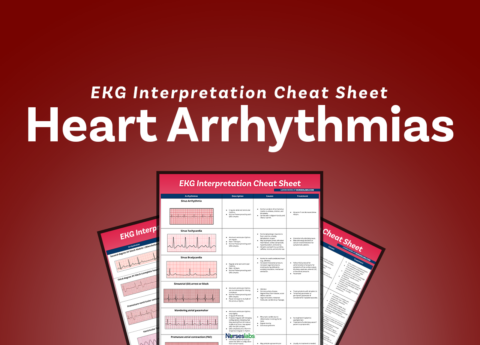



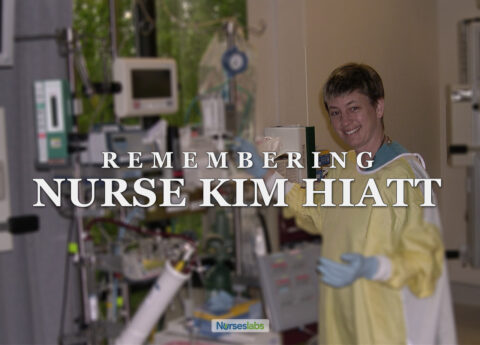



















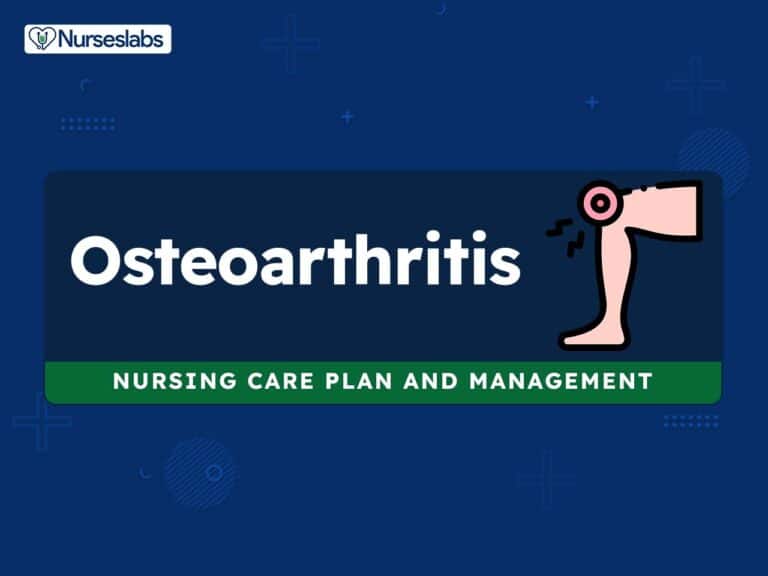
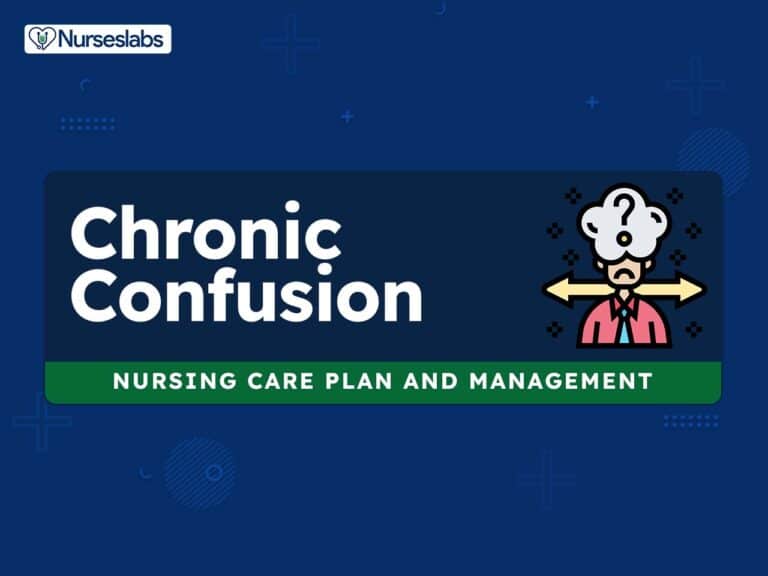

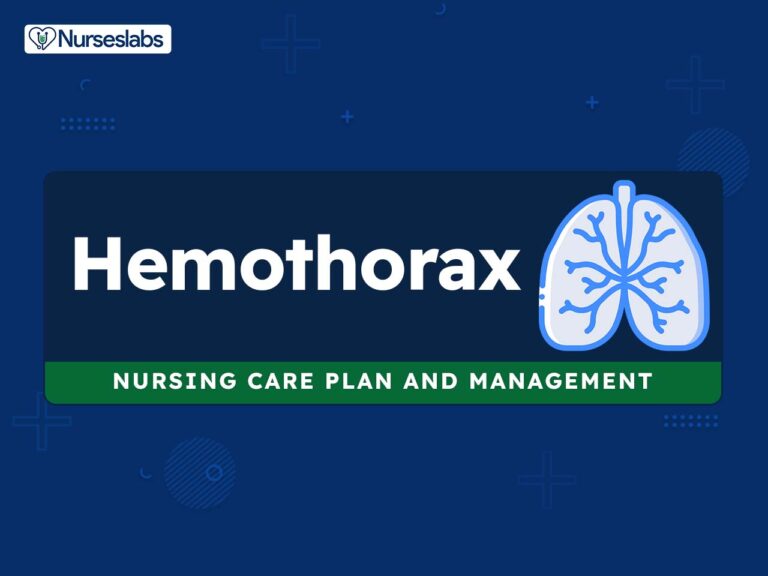

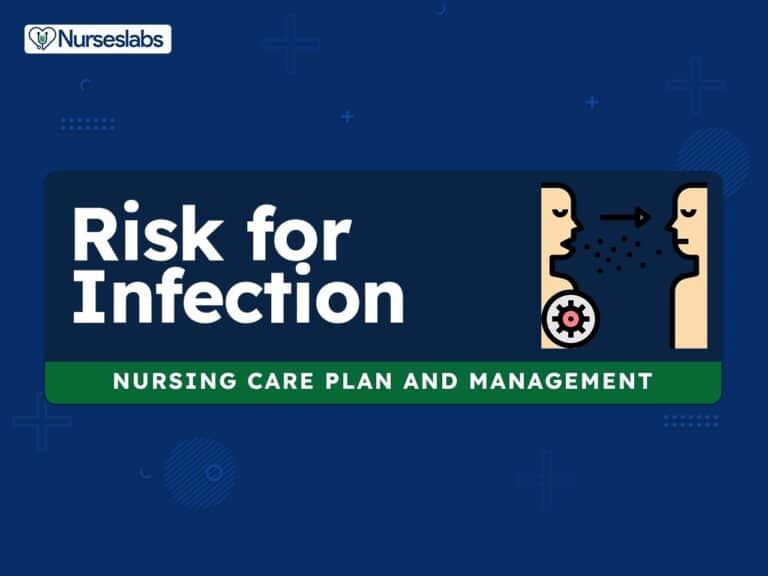
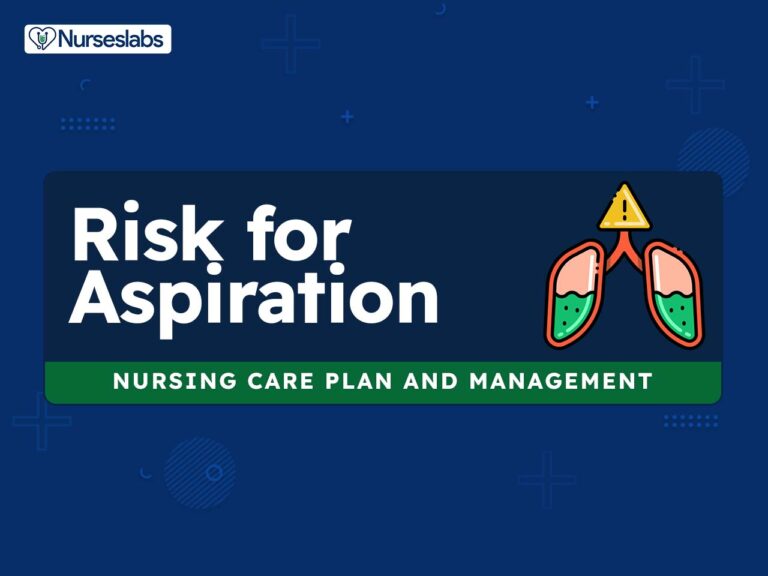
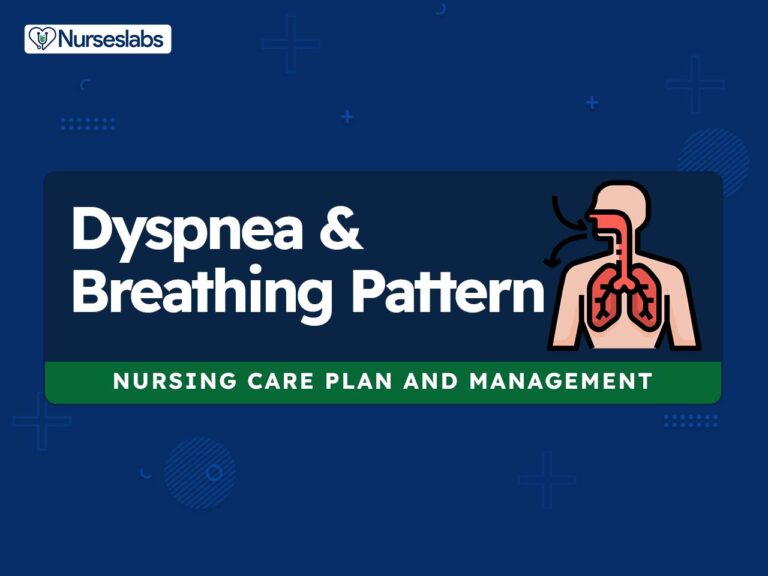


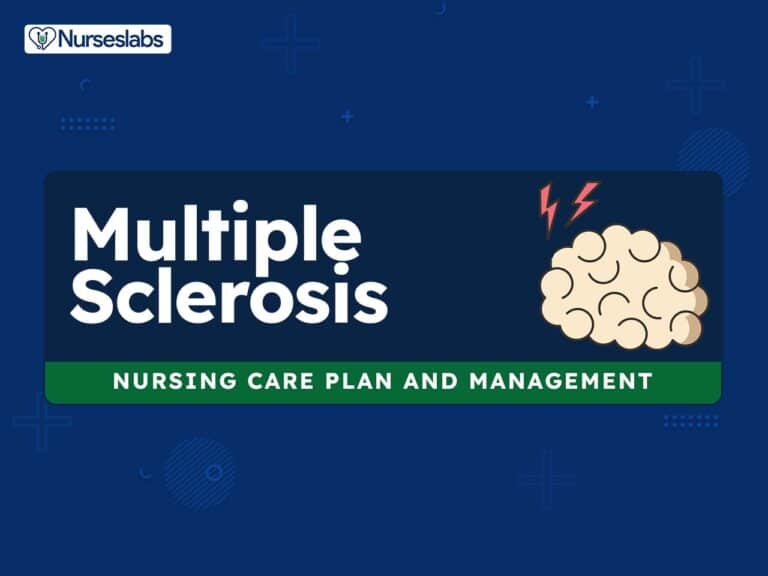
Leave a Comment